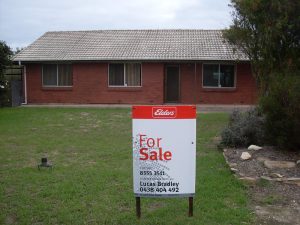 Picture the perfect family home… A beautiful house on an upscale road with a big garden, footpaths for walks, a community feel and close proximity to schools and amenities… Inside the house, natural sunlight flows smoothly through the large windows… There is only one problem: this perfect house is empty. What could be the problem? It is an open secret that empty houses sometimes fail to inspire prospective owners who do not have enough time and imagination on how they can grow the available space.
Picture the perfect family home… A beautiful house on an upscale road with a big garden, footpaths for walks, a community feel and close proximity to schools and amenities… Inside the house, natural sunlight flows smoothly through the large windows… There is only one problem: this perfect house is empty. What could be the problem? It is an open secret that empty houses sometimes fail to inspire prospective owners who do not have enough time and imagination on how they can grow the available space.
But wait – there is a solution on how the home can become occupied. The answer is virtual staging. Today, using the latest virtualisation techniques, it is possible to superimpose furnishings, photographs, décor and furniture in an open space. Virtualisation requires real talent, often from professionals like floorplansUsketch, but if it is done properly, one cannot tell that the space has been ‘staged’.
As a property owner looking to sell your house or an estate agent, why should you consider carrying out virtual staging over traditional staging methods?
1. It Is Cheaper than Traditional House Staging
It may come as a surprise but staging a room for sale can cost upwards of £1,000. In properties that ooze opulence, the cost of staging can go higher given the many items needed to make it look like it has a current resident not to mention that the items used during the staging have to suit the décor. When using virtual staging, it is possible for one to add premium furnishings to suit any décor without any consideration being placed on cost.
2. Photographs Are a Key Tool for Attracting Prospective Buyers
Providing a floor plan to potential buyers is nice but to really help a buyer imagine how the space would look with their possessions, it is better to use photographs. Bare walls are really uninspiring since they do not provide one with a perspective on the available space. By adding some furniture through virtual staging, a prospective buyer usually gets a perspective on how the property will look with their furnishings as well as whether the room can fit their lifestyle and taste.
3. Virtual Staging Is Less Disruptive to Property Owners
In some instances, the sale of a property usually discretion such as during a divorce or a probate sale. In such instances, if the property has already been cleared awaiting sale, traditional staging can be disruptive. This is because you have to keep searching for the property owner every time there is a prospective client for the house to be staged and then returned to its original conditional once the client has left. All these disruptions can be avoided and the full marketing service done in one sitting through virtual staging.
4. Virtual Staging Can Conceal Out of Place Décor
It is said that one man’s meat is another man’s poison. This saying also applies when it comes to décor. If there is a property that needs a stylish update to make it more attractive to prospective clients, virtual staging is the ideal solution.
5. New-Build and Unfinished Homes Can Be Made to Appear Complete
One of the biggest challenges faced by property developers is the completion of a building on time and within the available budget. Many housing developments often hit snags meaning that their sale usually derails. In order to create documents for marketing a property, photographs of a house are usually needed but this is often impossible when the house is incomplete. However, virtual staging can be used to make an unfinished house appear completed. With a few photographs showing the property layout, 3D designers can be able to add anything from detailing sockets, adding flooring, plumbing to even adding whole rooms!